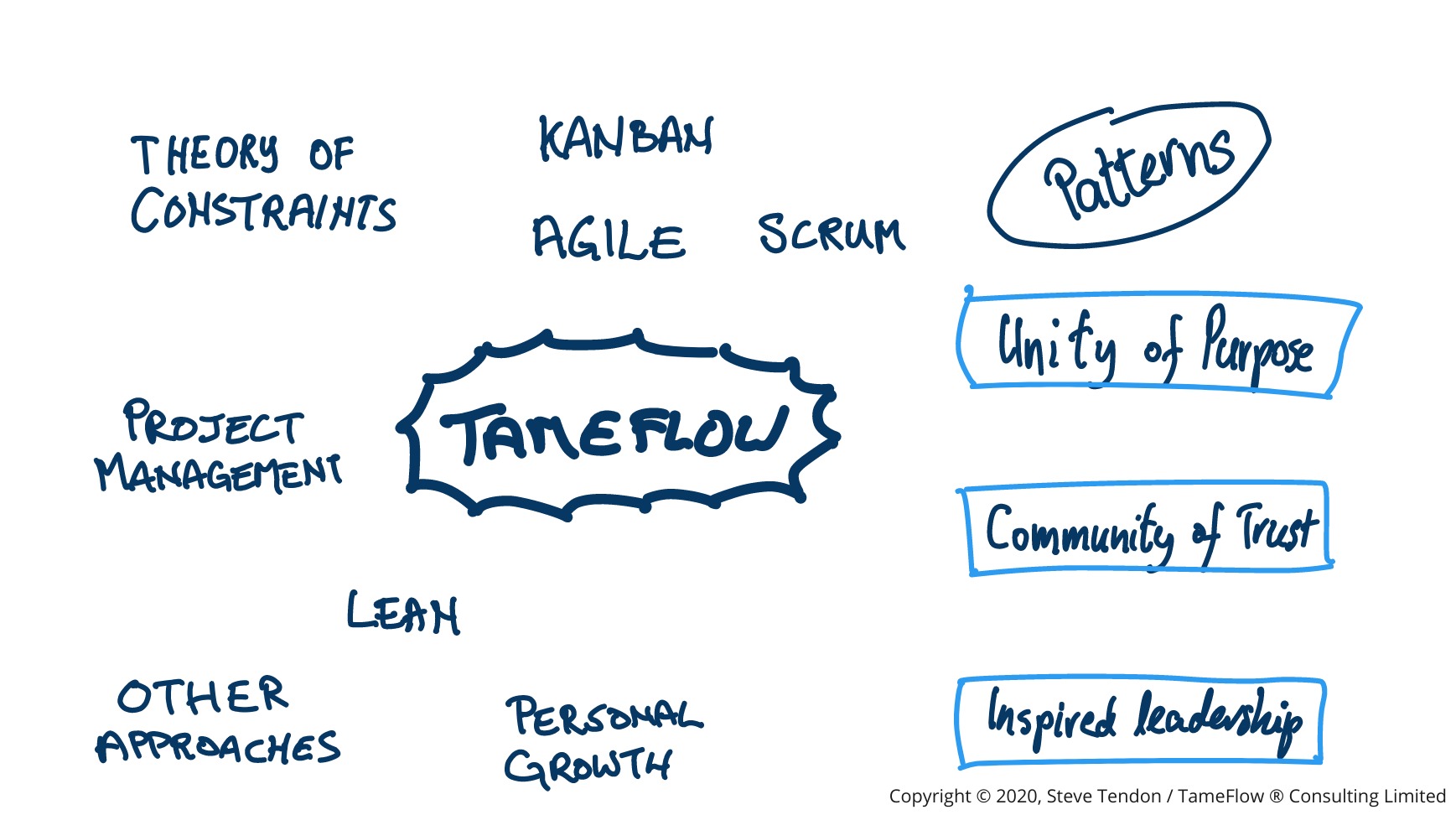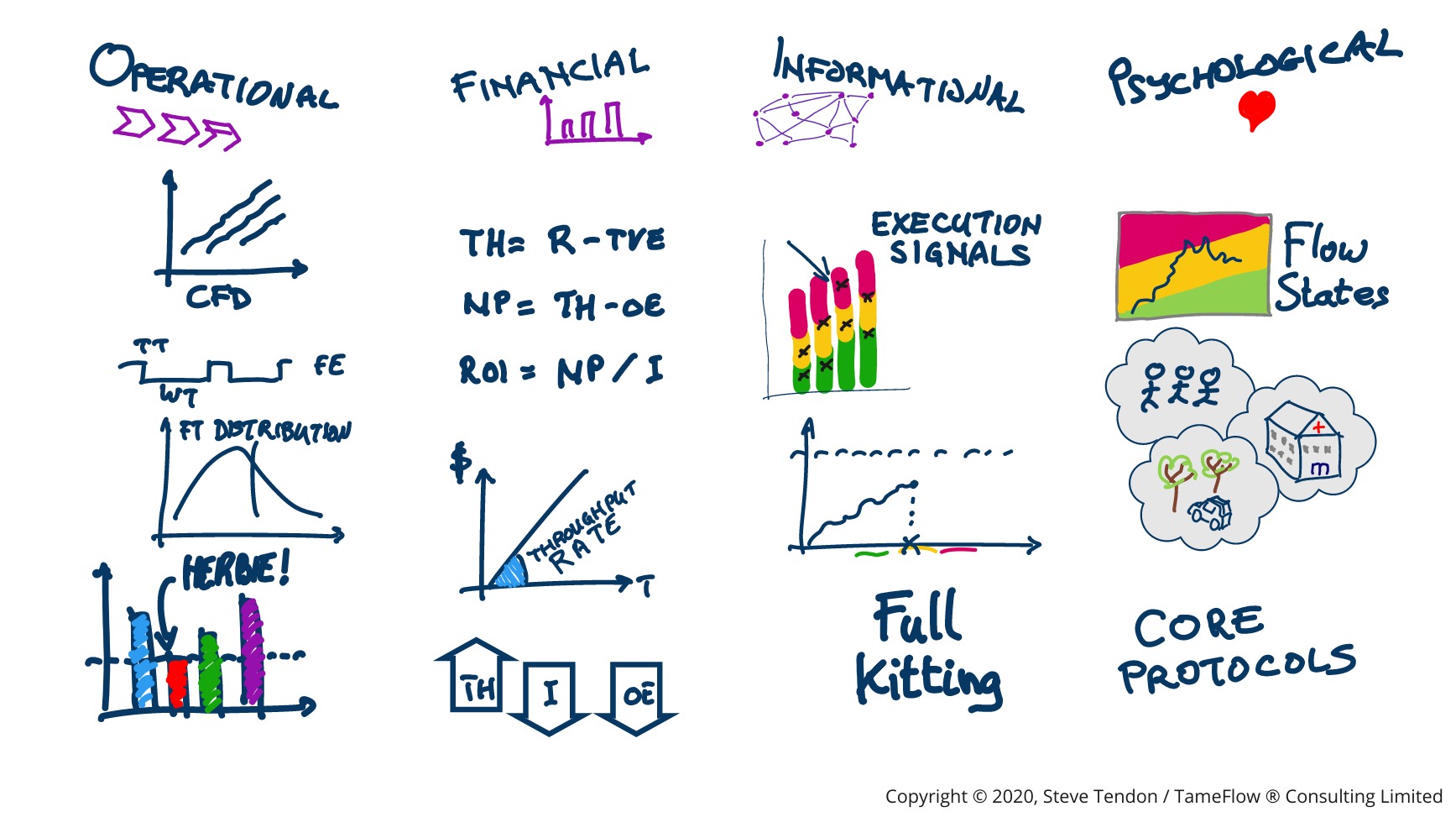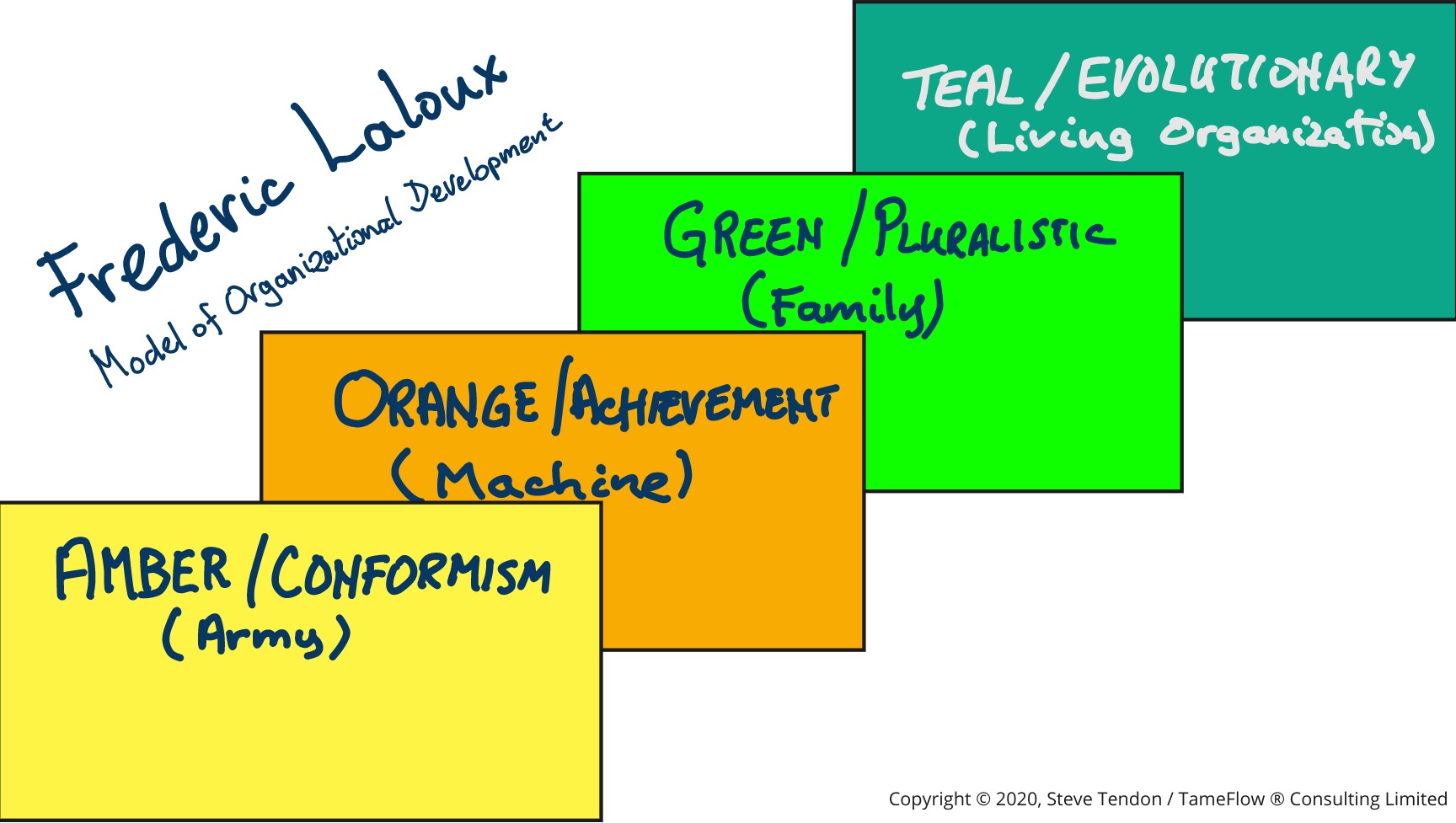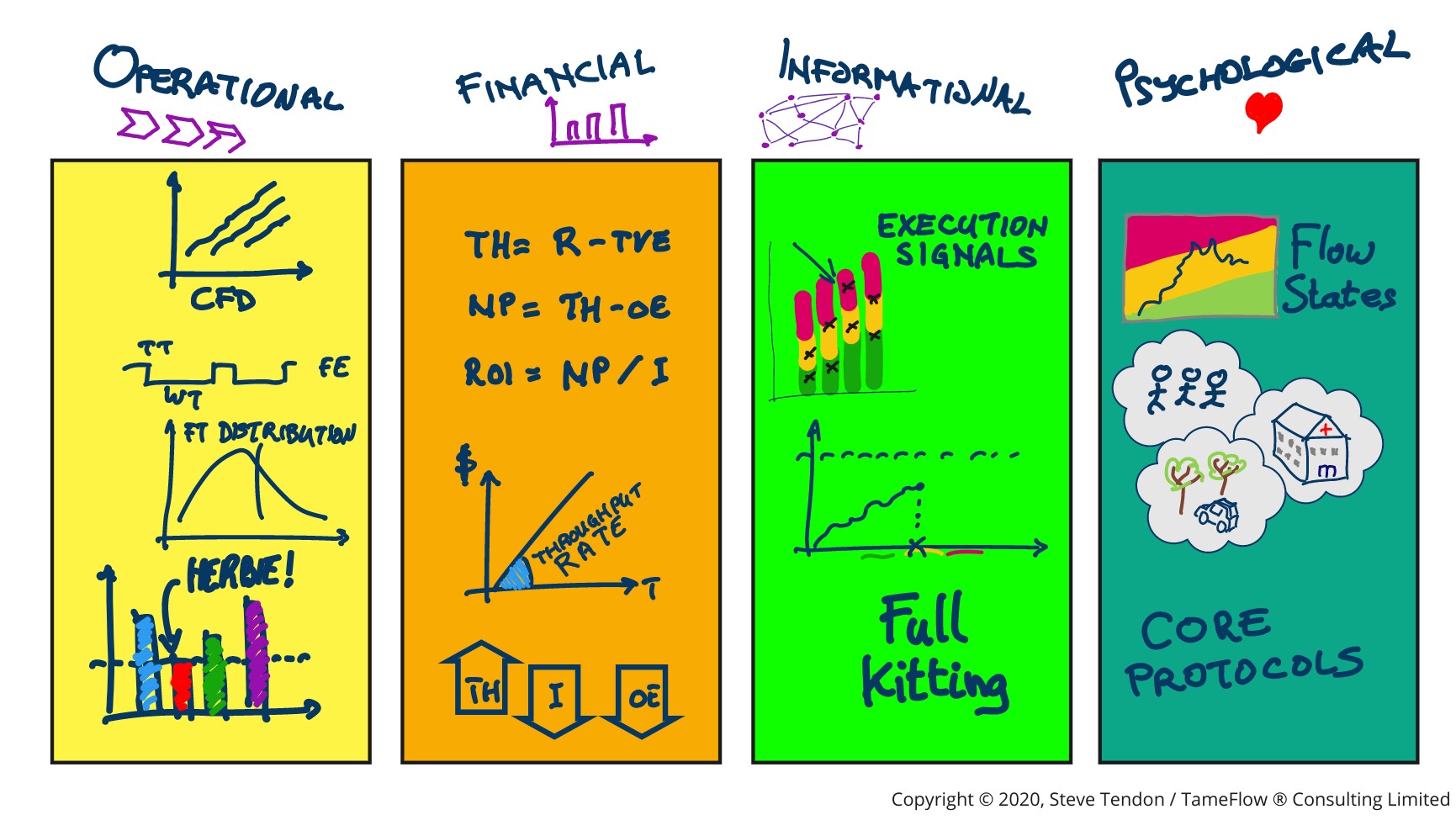Today, May 25, 2020, I ran my first webinar ever! And the firs one in the “Campfire Talks with Herbie” sereis. Hopefully, it will become a regular series.
Here’s a brief summary of what I covered.
Introduction to the topics

First I gave a general presentation of the Campfire Talks was Herbie, looking at the topics that will be covered. In particular, in addition to the TameFlow Approach proper, greater attention will be given to the Theory of Constraints and Kanban.
A recurring theme will be about the TameFlow Patterns.
The Four Flows of TameFlow

I then gave an overview of the Four Flows of TameFlow, covering some of their peculiarities. Like:
Operational Flow
- Use of Cumulative Flow Diagrams to visualize Operational Throughput.
- Measuring and using Touch Time and Wait Time to determine Flow Efficiency.
- The use of Flow Distributions.
- Metrics to identify the Constraint
Financial Flow
- The basici variables and equations of Throughput Accounting.
- The importance of Financial Throughput Rate.
- How Financial Throughput Rate connects to Operational Throughput, bridging the mental models of operations to those of finance.
- The criteria for successful Throughput Accounting operations.
Informational Flow
- Using metrics to trigger Execution Signals.
- The objective is to rewire the “nervous system” of the company, so that it can detect and react on unfavorable factors quicker.
- The role of Buffer Management in support of the Management by Exception paradigm.
- The usage Full Kitting not only for the preparation of work, but also for the meeting of minds of finance/executives with operations/engineering.
Psychological Flow
- Pscynological Flow States.
- Using Fever Charts to trigger and drive collective Flow States
- The three narratives: – The story of Herbie; – The story of the patient in the hospital; – The story of the Jeep, the Jungle and the Journey (3J).
- Use of the Core Protocols at the team level
TameFlow cannot be described in a “nutshell” - because it has these different flows or perspectives. Depending on who is listening, the “nutshell” will be different. For example, to an HR executive you will talk about the elements of Psychological Flow. You will approach a CFO with Financial Flow; and the CEO with Informational Flow. While engineering folks will be presented with Operational Flow.
Frederic Laloux’s Model of Organizational Development and how it relates to TameFlow
A mention of Frederic Laloux’s model of organizational develoment was made.

Laloux teaches that an organization will not be able to evolve further than level of its CEO. Hence quickly assessing what the CEO’s level - or potential level - of development is, will set the ceiling for the enitre organization.

Laloux colors can be mapped to the Four Flows. The level of the CEO will thus determine to what extent the Four Flows can be improved. For example, with an “Amber” CEO, the organization can potentially improve Operational Flow but most likely not the other three flows. With an “Orange” CEO, improvements can happen in the Operational Flow and in the Financial Flow, but not any further.